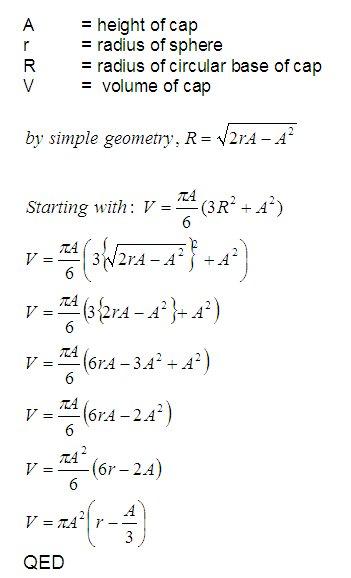Can I suggest a different way of considering an answer? The only way you can get a hole of exactly 10cm length through a sphere on an axis would be if it had negligible diameter.
JohnW2 wrote, "You are making the 'classic' error (for people looking at this puzzle) of assuming that the diameter of the sphere is 10cm (i.e. that the length of the hole is equal to the diameter of the sphere). You were
not told that and, as you point out, if the sphere were 10cm in diameter, the only 10cm hole you could drill through it would be one of zero diameter. Hence, for any finite size of hole (10cm long), the diameter of the sphere has to be greater than 10cm."
True, but my assumption was not that of the diameter of the sphere, but that a finite answer was required. A 10cm sphere is the only scenario which gives a finite answer to the puzzle. The given is that the hole is 10cm and through the sphere. If the hole is zero diameter then it must be a 10cm sphere. If the sphere was larger than 10cm a zero diameter hole wouldn't go through
The reason it is the only finite solution is in your second point to which I (and others) referred: "
JohnW2 wrote "It is perfectly possible to drill a 10cm long hole through a sphere with a diameter of, say, 40cm, albeit the hole would be of large diameter and there would not be much of the sphere left!"
Clearly true (I called it a fat doughnut), but as this is not specified in the puzzle, then the answer cannot be specified except to say that as the sphere and drill increase in diameter the cord must always be 10cm and thus there are infinite answers.
So, I suppose there are two correct answers:
This is a 10cm sphere with a zero diameter hole
or
There are an infinite number of (theoretical) answers if the drill has diameter.
My assumption was that only the finite answer was acceptable and in this I failed.


